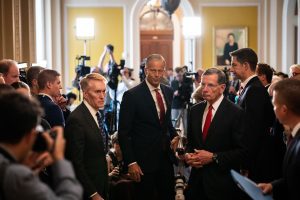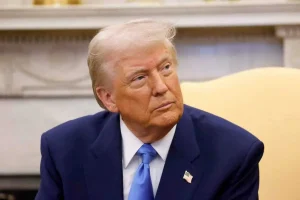Washington D.C. – The US Govt Shut Down began early Wednesday after lawmakers failed to bridge a bitter budget impasse. President Donald Trump and Democrats remained at odds over spending priorities, triggering the country’s 15th shutdown since 1981. This marks the first lapse since the historic 35-day closure of 2018–2019, raising immediate concerns for federal employees and essential services nationwide.
The shutdown officially commenced at 12:01 am after Senate Democrats blocked a Republican stopgap funding bill. That bill would have kept the government running until November 21, but Democrats demanded stronger healthcare subsidies and reversal of Medicaid cuts—conditions Republicans rejected.
Impact on Federal Workers and Services

The US Govt Shut Down has already begun to disrupt daily life across the United States. As many as 750,000 federal employees face furloughs without pay, costing the government nearly $400 million per day. Essential workers, such as active-duty troops, will remain on the job but without compensation until the standoff ends.
In addition to workforce disruption, major services are being suspended. Air travel is expected to face delays, scientific research will be put on hold, and the release of critical economic data, including the upcoming jobs report, will be postponed. Analysts warn these setbacks will ripple across industries and households, compounding the shutdown’s financial toll.
Trump’s Response and Strategy


President Trump amplified tensions by framing the US Govt Shut Down as part of his broader plan to reduce the federal workforce. He reiterated his intention to shrink government jobs by nearly 300,000 by year’s end. Trump insisted that “a lot of good can come down from shutdowns,” suggesting that many affected employees are Democrats.
While critics argue that his remarks dismiss the economic hardship for thousands of families, Trump remains firm that the shutdown could pave the way for what he calls “irreversible reforms” in government spending.
Also Read: Trump On Ind Pak Truce: Powerful Claim of Saving Millions of Lives
Democratic Opposition and Rejection of GOP Bill
Democratic leaders swiftly rejected Republican attempts to keep the government funded through a short-term extension. Senate Democratic leader Chuck Schumer accused Republicans of using the US Govt Shut Down threat to “bully” Democrats into accepting spending cuts. He emphasized that his party would not compromise on healthcare funding and Medicaid protections.
Republicans, in response, accused Democrats of holding federal operations hostage over what they call political maneuvering. Senate Majority Leader John Thune labeled the rejected measure a “nonpartisan” solution and said there was “no substantive reason” for the government to close its doors.
Broader Budget Stakes


The US Govt Shut Down comes with $1.7 trillion in agency funding at risk, representing roughly a quarter of the government’s $7 trillion budget. Analysts caution that the closure could drag on longer than previous shutdowns, fueled by a polarized political climate and neither side showing willingness to concede.
This standoff raises alarms for financial markets, government contractors, and families dependent on federal programs. Economists warn that a prolonged shutdown could erode confidence in the country’s governance and dampen economic momentum at a fragile time.
Historical Context and Comparisons
Since 1981, the United States has faced multiple shutdowns, but none carry the same political stakes as the current one. The US Govt Shut Down of 2018–2019 lasted 35 days and became the longest in history, severely impacting federal workers and contractors. The ongoing standoff could surpass that record if both parties remain entrenched.
Observers note that shutdowns have historically ended with compromises. However, today’s sharply divided political environment makes the path to resolution uncertain, raising fears of an extended impasse.
What Comes Next?
The Senate is expected to hold further votes in the coming days, but prospects for reopening remain unclear. With both Republicans and Democrats digging in, federal agencies and workers brace for an extended period of uncertainty.
As the US Govt Shut Down continues, ordinary Americans are caught in the crossfire. From delayed paychecks to stalled services, the costs grow daily. The political gamble on both sides may shape not just short-term policy but also the long-term trust in government leadership.
For now, the nation faces a test of endurance—how long can Washington allow the shutdown to persist before the mounting pressure forces a breakthrough?

